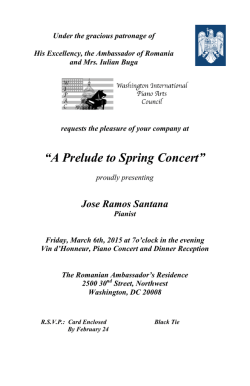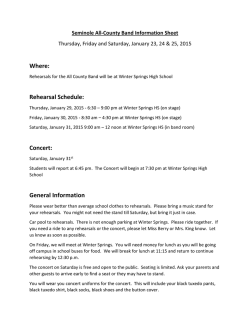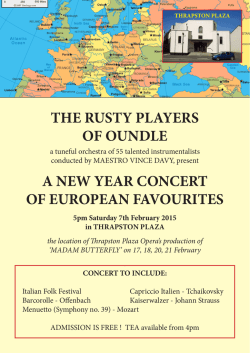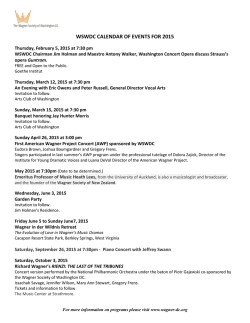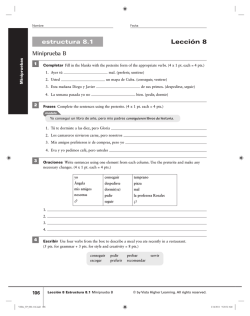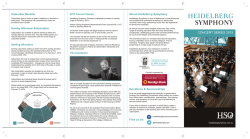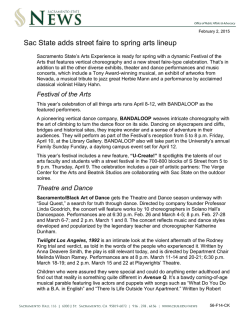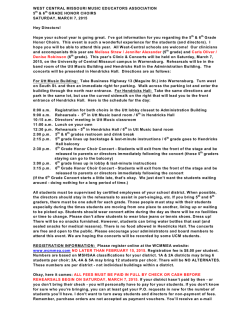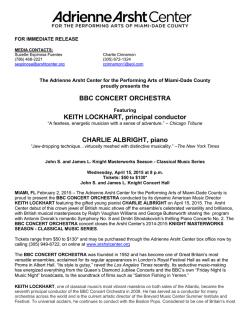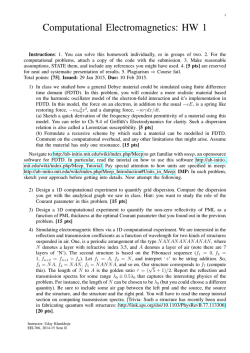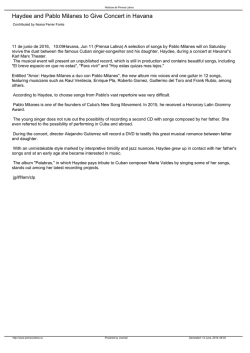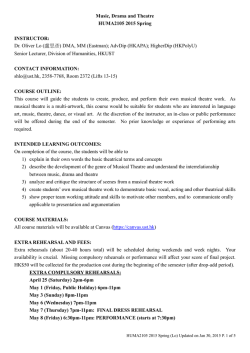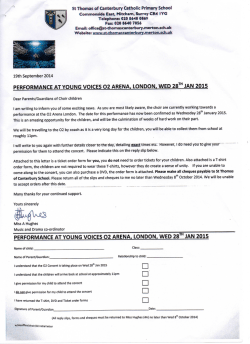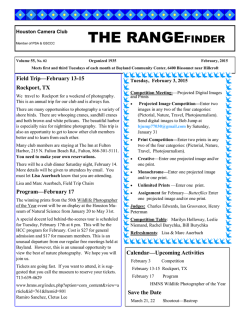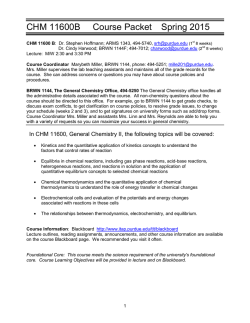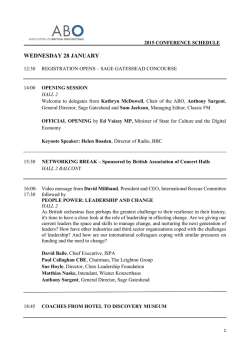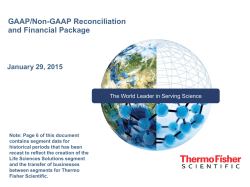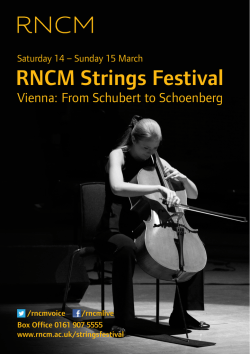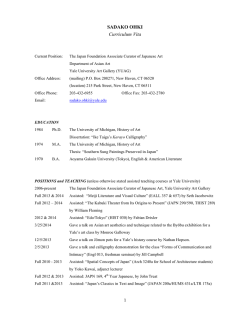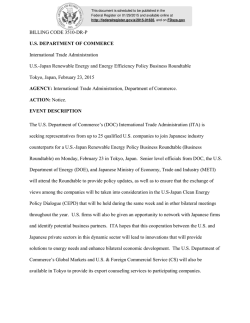
Music of the World HUMA1100 2015 Spring
Music of the World HUMA1100 2015 Spring INSTRUCTOR: Dr. Oliver Lo (盧思彥) DMA, MM (Eastman); AdvDip (HKAPA); HigherDip (HKPolyU) Senior Lecturer, Division of Humanities, HKUST CONTACT INFORMATION: [email protected], 2358-7768, Room 2372 (Lifts 13-15) AIMS: Survey of selected types of world music outside the Western European tradition, the student will learn to understand world music through the aspect of culture and society. INTENDED LEARNING OUTCOMES: On completion of the course, students should be able to 1. 2. 3. 4. develop an interest towards world music comprehend basic ethnomusicological terms and concepts; and the background information of each studied culture identify aurally the characters of the world music studied and discussed demonstrate an understanding of the relationship between music and culture COURSE MATERIALS: All course materials will be available at Canvas (https://canvas.ust.hk) THE INTIMACY OF CREATIVITY (APRIL 20-MAY 3) – “IC” This is the most important musical event in HKUST campus in 2015 Spring. Through attending the workshop/concert and journal writing, the students will explore various facets of the musical world. ATTENDANCE WILL BE TAKEN: Your student ID card will be scanned upon entrance AND exit from each event 1. Attend TWO Open Discussion or Lunchtime Lecture event PER WEEK (4 events total in 2 weeks) 2. Attend ONE World Premiere Concert or Preview Concert PER WEEK (2 concerts total in 2 weeks) CONCERT I: April 25 at HKUST, 8:00pm OR April 26 at City Hall Theatre (Central),4:00pm CONCERT II: May 2 at HKUST, 8:00pm OR May 3 at City Hall Theatre (Central), 4:00pm 3. After the workshop and concerts, the students will submit a concert report. HUM1100 (Lo) – 2015Spring – Updated on Jan 30 2015 P. 1 CONTENT (100%): 1. Introduction: Music-Culture and “World Music” (10%) What is Music? Music is universal, but its meaning is not Music symbolizes a people’s way of life Paul Simon’s Graceland – The first important “World Music” album Do we hear “World music” in our daily life? 2. Elements of Music (10%) Scales, interval, temperament, texture, form, etc. 3. India (10%) Aesthetics of India music Scales and Rhythmic pattern of Northern Indian music India instruments: Sitar and tabla 4. Japan (15%) Aesthetics of Japanese music Japanese instruments: Biwa, shakuhachi, biwa, koto, shamisen Western influence upon Japanese music and fusion Japanese ancient ensemble music: Gagaku The Japanese theatre: Noh, Buranku and Kabuki 5. China (25%) Ancient Chinese instruments Notation for Chinese music Liu Tianhua and erhu music Shanghai popular music Yangbanxi – Modal works during Cultural Revolution Chinese operas Westernization of Chinese music 6. Indonesia (10%) Gamelan 7. Middle East (10%) Islamic and Jewish music Arabic music 8. Black American-Jazz (10%) Dixieland, Swing, Bebop and Cool SUGGESTED MATERIALS: Alves, William. Music of the Peoples of the World (with 2 CDs). (ML3545 .A48 2006/ ML3545 .A48 2010) Thomson Schirmer, 2006/2010. HUM1100 (Lo) – 2015Spring – Updated on Jan 30 2015 P. 2 ASSESSMENTS: Intended Learning Outcomes Measured by Development of an interest towards world music. Attendance of Lectures 10% - Comprehension of basic ethnomusicological terms and concepts; and background information of each studied culture. - Ability of identifying aurally the characters of the world music studied and discussed. 1 pre-midterm online Quiz 1 Midterm 1 pre-exam online Quiz Final Exam Understanding of the relationship between music and culture. Special Activities: “The Intimacy of Creativity” *PRS will be used 5% (M.C.) 20% (M.C.) 5% (M.C) 35% (Mostly M.C.) Report 10% o Attend 6 IC sessions (4 discussions+2 concerts), maximum pts=10% o Attend 5 IC sessions (with 2 concerts), maximum pts=9% o Attend 4 IC sessions (at least 1 concert), maximum pts=7% o Attend 3 IC sessions (at least 1 concert), maximum pts=5% o Attend 2 IC sessions (at least 1 concert), maximum pts=3% o Attend 1 IC concert, maximum pts=1% o Attend 0 IC concert, maximum pts=0% 1 Case Study 15% Attendance will be taken 13 times randomly throughout the eleven weeks after the add-drop period No exceptions: Do not ask the IAs to sign you back if you miss the attendance You may miss three classes (exclude the compulsory workshop sessions) without penalty, but starting from you fourth absence, one percent will be deducted for each absence (10% maximum deduction). The online quizzes are designed to help you to prepare for you Midterm and Final Exam. NO make-up exam or test will be offered. If you miss the Midterm, 18% (out of 20%) of the total score will be transferred to the final exam (i.e. the weight of final exam will become 53%). Relative grading system will be used to calculate your final letter grade. HKUST’s Norm: A (10-20% of the class), B (25-40%), C (35-45%), D (5-10%), F (0-5%) You will submit your case study and report through Canvas. HUM1100 (Lo) – 2015Spring – Updated on Jan 30 2015 P. 3 ACADEMIC HONESTY: If you are being dishonest in the course, the penalty is an F for the course. Cheating: a) If you look at other students’ papers or materials (ex. notes) during exam or test. Plagiarism: b) If you claim credits for other students’ work in group projects If you copy sections from another source without referencing it Excerpt from http://tl.ust.hk/integrity/regulations-1.html “The most serious cases are referred to the Student Disciplinary Committee. The Student Disciplinary Committee can take away your eligibility for a degree; suspend you from the University, or simply dismiss you right away.” LEARNING ENVIRONMENT: Another issue that concerns all students and teachers is the maintenance of a good learning environment in the classroom. Arriving late, chatting to friends after class has started, and using mobile phones are all discourteous to the instructor and disruptive for classmates who are there to learn. HUM1100 (Lo) – 2015Spring – Updated on Jan 30 2015 P. 4
© Copyright 2025
